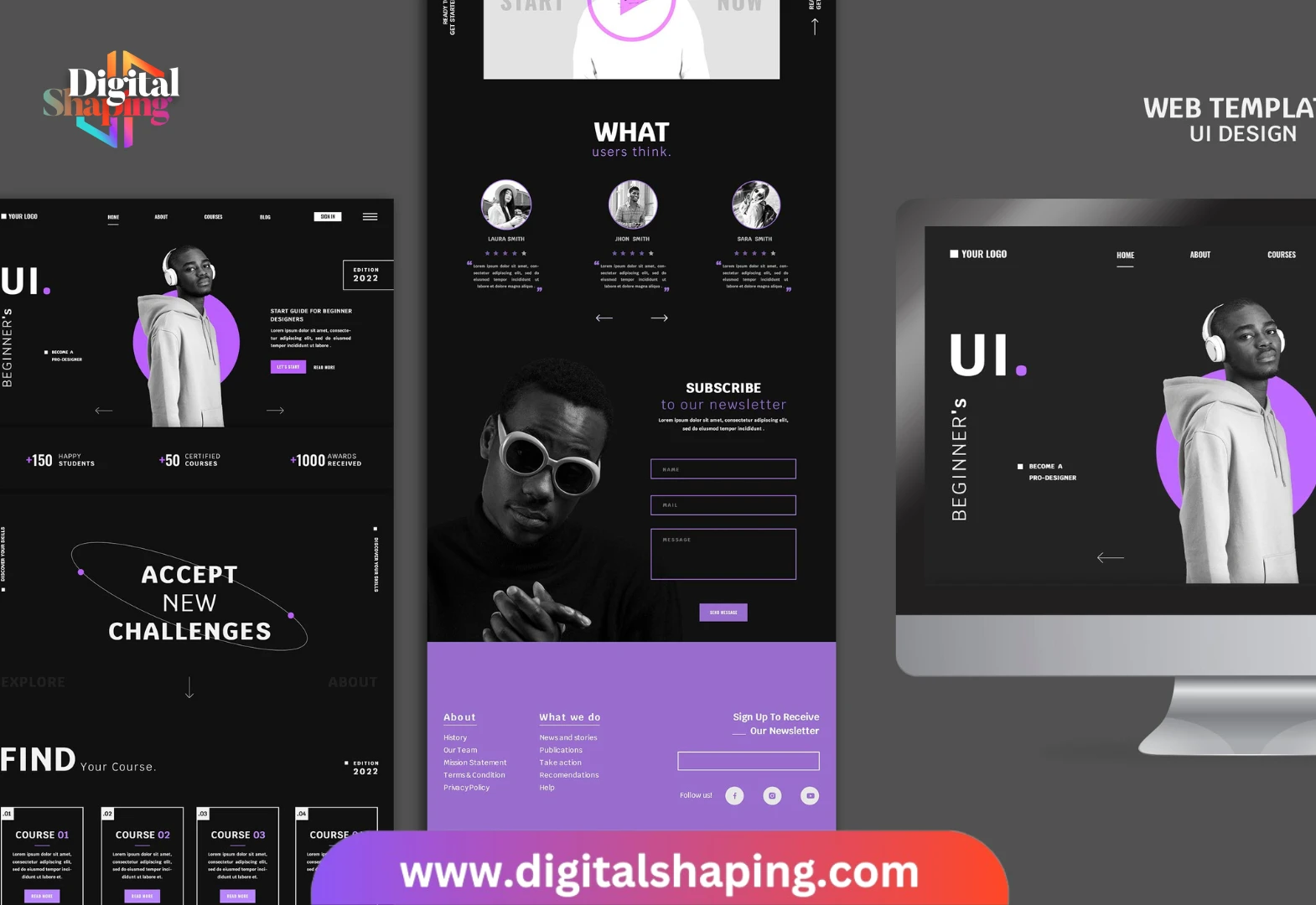You’ve worked hard on your new website. The design looks great, your content is live, and everything seems ready to go. But before you hit that “publish” button, there’s one last thing to check: the user experience.
UX, or user experience, plays a massive role in how your visitors interact with your site. A sleek website that’s hard to navigate won’t keep people around for long. That’s why this checklist exists. At Digital Shaping, we guide our clients through every step of a website launch, and we’ve learned that even small UX tweaks can make a big impact.
Let’s walk through a practical UX checklist to make sure your site is intuitive, engaging, and ready for visitors from day one.
Start with Navigation
Your visitors should know exactly where to go from the moment they land on your site.
- Keep menus short and logical.
- Group similar items together.
- Add a clear “Home” button and contact access.
- Use breadcrumb navigation for deeper pages.
A smooth path reduces frustration and encourages visitors to explore more.
Optimize for Mobile
More than half of all web traffic comes from mobile devices. Your site has to look and feel great on phones and tablets.
That’s why having a mobile-first strategy is more important than ever. We recommend planning design and interactions for small screens first to ensure the best possible experience on any device.
- Test responsiveness on various screen sizes.
- Make buttons easy to tap.
- Use mobile-friendly fonts and layout.
- Compress images for faster load times.
Mobile UX can make or break a first impression.
Make CTAs Obvious
What should users do next? That should always be clear.
Whether you want them to book a service, contact you, or download something, calls to action should be visible and compelling. This is where effective UI/UX design comes in—strategically placed buttons and eye-catching elements guide users naturally toward action without feeling pushy.
Streamline Forms
If your site includes a form, test it thoroughly.
- Are the fields easy to fill?
- Are error messages helpful?
- Does the form work on all devices?
Don’t make people work to get in touch with you.
Check Page Load Speeds
A slow site kills conversions. Users expect pages to load in two seconds or less.
Use tools like Google PageSpeed Insights or GTmetrix to identify problem areas. Compress large images, reduce unnecessary plugins, and enable browser caching.
These changes not only improve user experience but also have a direct effect on SEO. Learn more about how UI/UX impacts SEO and why it should be part of your launch plan.
Ensure Consistency

Your fonts, colors, button styles, and headings should feel cohesive across all pages. Inconsistency creates confusion. Brand consistency builds trust.
Go through each page and see if anything stands out for the wrong reasons.
Review Accessibility
Accessible websites aren’t just ethical—they reach a wider audience and improve SEO.
- Use a clear contrast between text and background.
- Add alt text to all images.
- Make sure your site is usable with keyboard navigation.
- Avoid flashing visuals or overly animated elements.
A strong UX approach also overlaps with accessibility and technical SEO best practices, which together improve your rankings and ensure no user is left out.
Test Across Browsers
Chrome, Firefox, Safari, Edge—they all interpret code a little differently.
Check how your website behaves across multiple browsers. Also, try on desktop, tablet, and phone to ensure a consistent experience.
Proof Every Word
Typos undermine credibility. Read every headline, button label, paragraph, and error message. Check contact details, form submissions, and thank-you pages. Even one mistake can send the wrong message.
Create Friendly 404 Pages
Sometimes users land on the wrong page. A helpful 404 page can guide them back instead of leaving them stranded.
Include a message that explains the error, a link back to your homepage, and maybe even a search bar.
Link to Legal and Privacy Policies
If you collect user data or run ads, privacy matters.
Make sure your site includes a privacy policy, cookie notice, and terms of service where relevant. It shows transparency and can help with regulatory compliance.
Set Up Analytics

You can’t improve what you don’t track.
Install Google Analytics and Search Console. Set goals like form submissions or newsletter signups. Track bounce rates, average session duration, and conversion paths.
These insights help you adapt quickly after launch.
Plan a Soft Launch
Before announcing your new site to the world, invite a few users to test it. This can be internal staff, loyal customers, or even a small focus group.
Observe how they interact with the site. Ask questions. Make changes based on real feedback.
Check for Broken Links
Use tools like Screaming Frog to crawl your site and flag broken or redirected links. Clicking on a dead link is frustrating and can hurt your SEO.
Fix or remove them before launch day.
Final Touches: Meta Data and SEO
Even if SEO isn’t your main focus, you’ll want search engines to understand your site.
- Write unique meta titles and descriptions for each page.
- Use H1 and H2 headers properly.
- Add an XML sitemap and submit it to Google.
- Ensure clean, readable URLs.
You don’t need to be an SEO expert, but these steps go a long way.
Ready to Launch?
Once your checklist is complete, you’re ready to share your website with the world.
A successful launch starts with thinking like your visitor. That’s what UX is all about: making every click intuitive and every action smooth. And if you want a second pair of eyes (or a whole team), we’re here to help.
Need help launching a UX-friendly site? Reach out to our team at Digital Shaping. We’re ready when you are.

